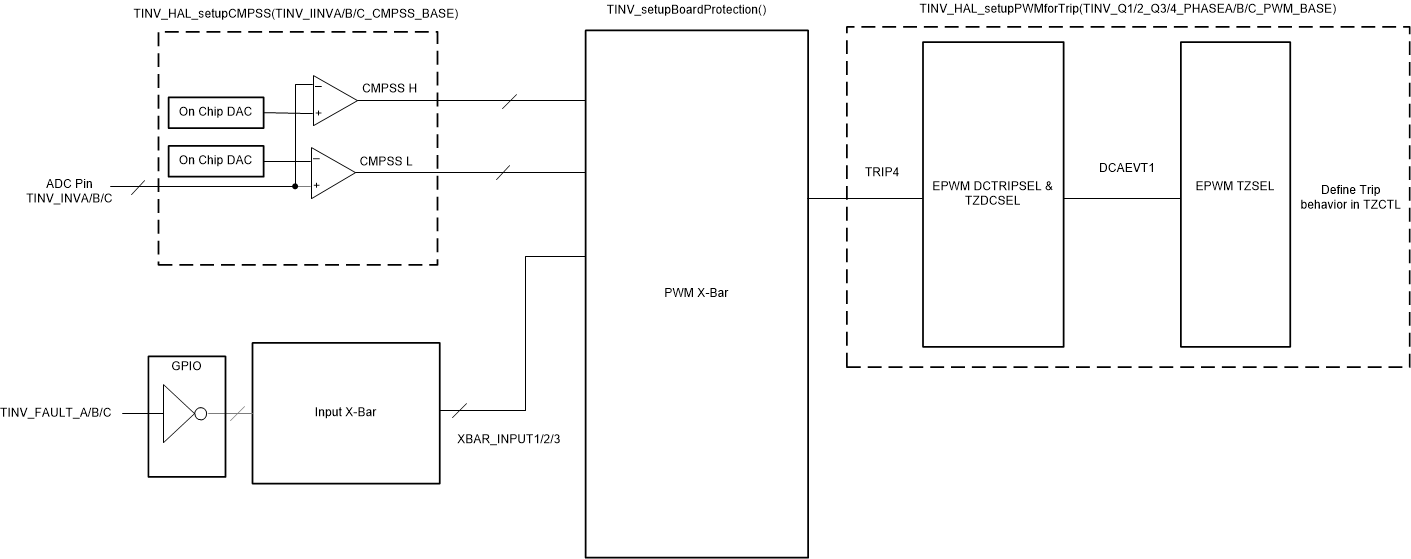JAJU510H March 2018 – December 2022
- 概要
- リソース
- 特長
- アプリケーション
- 5
- 1System Description
- 2System Overview
-
3Hardware, Software, Testing Requirements, and Test Results
- 3.1 Required Hardware and Software
- 3.2 Testing and Results
- 4Design Files
- 5Trademarks
- 6About the Authors
- 7Revision History
3.1.2.2 Protection Scheme
Figure 3-2 explains the software functions used to setup the trip behavior on the design.
 Figure 3-2 Software Diagram for Trip Setup
Figure 3-2 Software Diagram for Trip SetupTINV_updateFaultStaus() function is called periodically in a slow background task to updating Trip Flags and also resetting the latch if needed.
If a trip event has occurred, the PWM needs Trip flags need to be cleared separately. This part is typically handled in the ISR by calling TINV_clearPWMTrips()